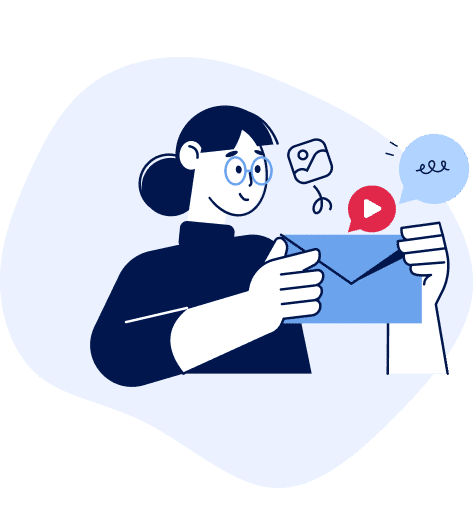Convert More Leads Into Sales With These Five Email Follow-Up Campaigns
- Updated on: 2018-09-15
- Read original article here

Most businesses know they should be following up leads with a good email autoresponder sequence. However, many simply don't know what to write in their emails, and so they never get around to it.
Here are five approaches you can use when creating your email follow-up sequences.
These approaches will help you stay top of mind without boring or annoying your prospect with the same message every time.
Since these are frameworks, not scripts or copy-and-paste templates, you can adapt these to suit virtually any product or service in any industry.
Your prospect likely has some questions about your product or service; they'd like answers before deciding they're ready to buy.
What you need to do, therefore, is to craft an email campaign covering frequently asked questions.
You can either answer one question per email or put the most frequently asked questions into one email (e.g., "The 7 Most Frequently Asked Questions About XYZ Product").
Tip: Frequently asked questions also make great subject lines. So, if you are having trouble coming up with a subject line, simply use the question you are addressing as the subject line—and you will instantly have a great one.
It's human nature to get complacent about the way things are.
Often, if prospects don't buy, they end up justifying their problem or telling themselves that things "are not really that bad."
With the pain-reminder campaign you simply remind your prospect of the problems they have and the pains they are experiencing, and what effect all that it is having on their life.
And you remind them that those problems, pains, and frustrations will not go away until they take action and find a solution (i.e., buy your product or service).
Tip: People are often concerned more about the impact their problems have on the people around them than about the effects of those problems on themselves. Keep that in mind when drafting in your emails.
As I noted, people can easily become complacent about their situation.
One other way to compel them to take action is to show them how much worse their problem or pain will get in the future if not fixed now, then compare that situation to the benefits they will miss out on by not using your product or service.
By projecting these two paths into the future and highlighting the difference, you increase the perceived incentive to act and the cost of inaction, thus compelling them to do something about their current situation.
Tip: If you would like to see this approach applied to a successful marketing campaign, check outone of the Wall Street Journal's most successful marketing campaigns (which sold $2 billion worth of subscriptions).
Your prospects likely have unaddressed objections that are holding them back from buying.
Those concerns may center on a range of topics, including price, value, reliability, quality, functionality, and service.
You can craft an email tackling each common objection and in so doing gradually tear down the barriers to buying.
Tip: When a prospect has an objection, usually there is an underlying issue or problem that needs to be addressed. So, when you are crafting your emails, make sure you handle both the surface-level objection and the prospect's deeper, underlying objection.
Your prospects have likely heard of, tried, or even been let down by other solutions on the market.
Therefore, they are often skeptical about whether your product or service will really get them the results they desire.
One powerful way to overcome such skepticism is to provide proof that your product or service delivers upon its promise: success stories of past customers or clients.
Each success story should cover the following:
Success stories are an incredibly powerful way to turn more prospects into buyers, so if you're not already using them, start!
Tip: The more specific the details in your success story, the more believable and powerful it will be. For example, "Billy added $1.3 million in revenue to his business in 8 months, had to hire 7 more team members to help him with the increase in work, and also went from working 65+ hours a week to less than 35 hours a week, which allowed him to spend more time at home with his wife and newborn," is far more powerful and believable than "Billy was able to grow his business, get more customers, and work less."



